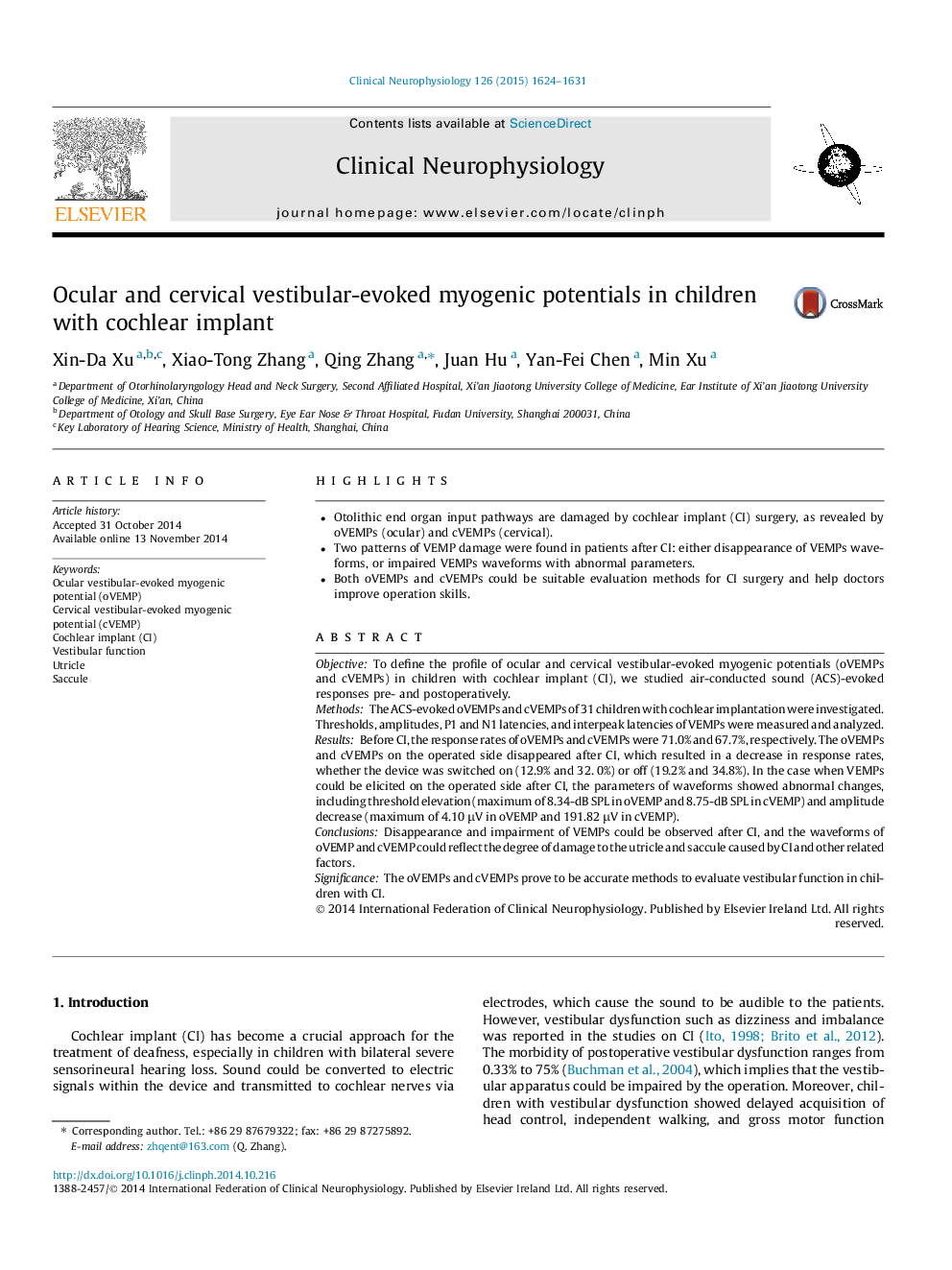| Article ID | Journal | Published Year | Pages | File Type |
|---|---|---|---|---|
| 3042564 | Clinical Neurophysiology | 2015 | 8 Pages |
•Otolithic end organ input pathways are damaged by cochlear implant (CI) surgery, as revealed by oVEMPs (ocular) and cVEMPs (cervical).•Two patterns of VEMP damage were found in patients after CI: either disappearance of VEMPs waveforms, or impaired VEMPs waveforms with abnormal parameters.•Both oVEMPs and cVEMPs could be suitable evaluation methods for CI surgery and help doctors improve operation skills.
ObjectiveTo define the profile of ocular and cervical vestibular-evoked myogenic potentials (oVEMPs and cVEMPs) in children with cochlear implant (CI), we studied air-conducted sound (ACS)-evoked responses pre- and postoperatively.MethodsThe ACS-evoked oVEMPs and cVEMPs of 31 children with cochlear implantation were investigated. Thresholds, amplitudes, P1 and N1 latencies, and interpeak latencies of VEMPs were measured and analyzed.ResultsBefore CI, the response rates of oVEMPs and cVEMPs were 71.0% and 67.7%, respectively. The oVEMPs and cVEMPs on the operated side disappeared after CI, which resulted in a decrease in response rates, whether the device was switched on (12.9% and 32. 0%) or off (19.2% and 34.8%). In the case when VEMPs could be elicited on the operated side after CI, the parameters of waveforms showed abnormal changes, including threshold elevation (maximum of 8.34-dB SPL in oVEMP and 8.75-dB SPL in cVEMP) and amplitude decrease (maximum of 4.10 μV in oVEMP and 191.82 μV in cVEMP).ConclusionsDisappearance and impairment of VEMPs could be observed after CI, and the waveforms of oVEMP and cVEMP could reflect the degree of damage to the utricle and saccule caused by CI and other related factors.SignificanceThe oVEMPs and cVEMPs prove to be accurate methods to evaluate vestibular function in children with CI.
